A Japan Must: Tea in a Zen Garden
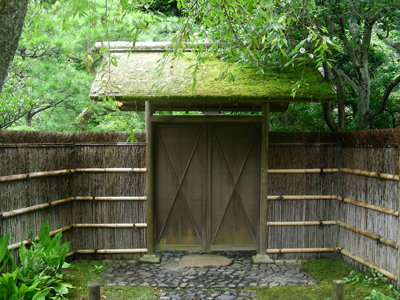
Story and Photos by Yumi McDonald
I hear the rich resonating echo of the shishiodoshi, a bamboo tube that hits against a stone when filled with water, as I feel the calm breeze sifting through the fine pine leaves, and I know that I am sitting at an 800-year-old Zen garden in Kyoto. This simple experience brings about inner spirituality and peace of mind.
There are many beautiful Zen temples in Kyoto, Kamakura and other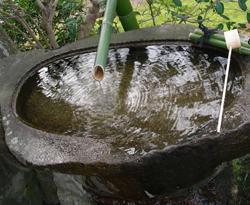 cities in Japan. In contrast to the usual tightly scheduled vacation trip, spending time in a quiet Zen garden is its own getaway in that the purpose is to escape busy daily life and just feel happy. With towering rocks arranged on the white sand raked to look like ripples of water, lush green moss shining in the sun; Zen gardens resemble big scale modern art. cities in Japan. In contrast to the usual tightly scheduled vacation trip, spending time in a quiet Zen garden is its own getaway in that the purpose is to escape busy daily life and just feel happy. With towering rocks arranged on the white sand raked to look like ripples of water, lush green moss shining in the sun; Zen gardens resemble big scale modern art.
In many of Japan’s Zen temples, visitors can enjoy a matcha green tea service. Matcha green tea is a powdered tea served in a special way. First, matcha powder is placed in a bowl, then hot water is poured and briskly stirred with a bamboo whisk. The result is ultra delicate foam on the surface. It has been used by the Zen monks for over nine centuries as a special drink to stay awake and relax before starting Zen meditation. For around the cost of USD $5, the temple staff prepare authentic green tea in hand-made ceramic tea bowls (each with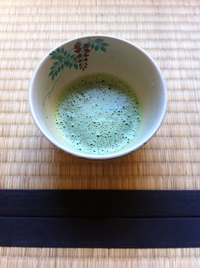 its own story) which you drink while gazing at the garden. The tea is always served with a sweet. This is no time for a cell phone of course. It is all about being quiet. its own story) which you drink while gazing at the garden. The tea is always served with a sweet. This is no time for a cell phone of course. It is all about being quiet.
Among the Zen temples in Kyoto one can have matcha green tea at are Nanzen-ji (famous for the Zen garden appointed as a place of Scenic Beauty), Kinkaku-ji (the Golden Pavilion), Tofuku-ji (known for the sophisticated gardens and a great museum), Myoshin-ji (the largest of all Zen temples) and Daitoku-ji (known for its special tie to the legendary tea master Sen no Rikyu). I also love Shisen-do which means “the house of great poets”. This hermitage of Ishikawa Jozan, a highly admired samurai-poet during the 16th-17th century, is so sophisticated and dreamy.
Kamakura is another great hub of Zen temples where one can enjoy matcha green tea. Located an ho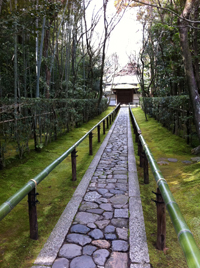 ur away from Tokyo by train, it was the first samurai’s capital of Japan from 1185-1333. Among the authentic Zen temples where one can visit and have tea are Kenchoji (the oldest Zen training monastery in Japan), Engakuji (famous for many Zen meditation classes), Tokeiji (tea service at a beautiful cottage during the plum, iris and hydrangea seasons) and Jomyoji (tea service in front of a rock garden). ur away from Tokyo by train, it was the first samurai’s capital of Japan from 1185-1333. Among the authentic Zen temples where one can visit and have tea are Kenchoji (the oldest Zen training monastery in Japan), Engakuji (famous for many Zen meditation classes), Tokeiji (tea service at a beautiful cottage during the plum, iris and hydrangea seasons) and Jomyoji (tea service in front of a rock garden).
Note that most of these Zen temples are huge and consist of usually 20 or more sub-temples inside. You should ask at the entrance which sub-temple has the matcha tea service.
While North Americans have been rapidly catching on to the health benefits of regular green tea, matcha green tea is quickly gaining popularity in the States as well. Once back home, you can find it and other necessary items like bowls and whisks at fine tea store chains and Asian teashops.
But the only real way to appreciate matcha tea is to be sipping it out of a special bowl in the silent beauty of a Japanese garden, listening to the delicate sound of the water and the wind.
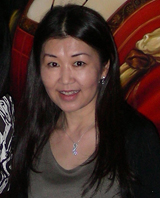
Yumi McDonald is a Connecticut-based writer who grew up in Tokyo and graduated from Keio University. She has been writing about art, design and culture for major Japanese magazines including airline magazines for more than 25 years. Before moving to CT she lived in Tokyo and Wellington, New Zealand. She was Vice President of the Japan Society of Fairfield County and has organized many events in relation to Japan. She writes about her life in America and Japan on her blog yumimcdonald.blogspot.com.
|

